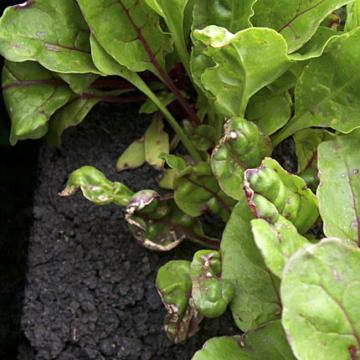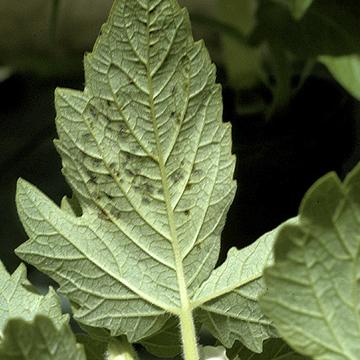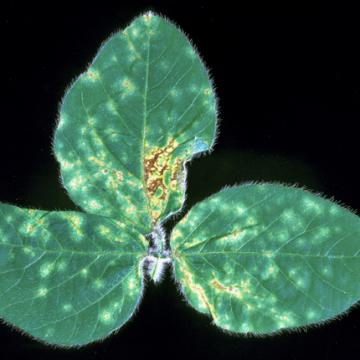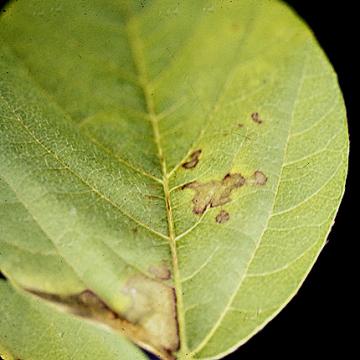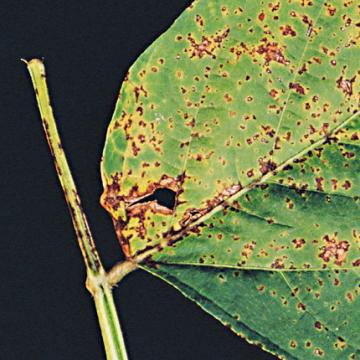DISEASE: Bacterial blight
HOST: Soybean
Leaves with yellowish brown necrotic lesions. Lesions also may be yellow to light brown and bordered by yellowish green halos. Lesions occur on stems, petioles, and pods.
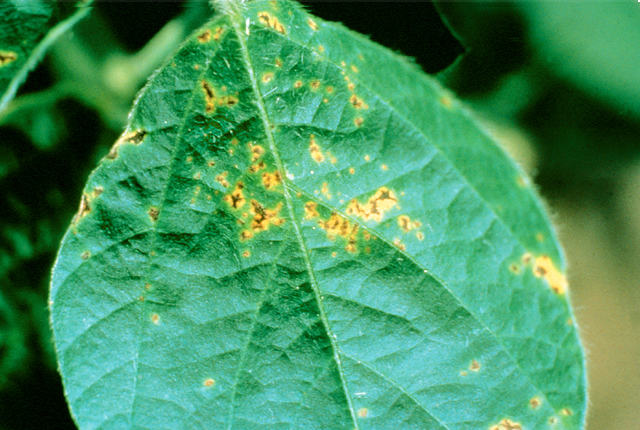
Bacterial blight | Soybean
DISEASE: Bacterial blight
HOST: Soybean (Glycine max)
PATHOGEN: Pseudomonas syringae pv. glycinea
SOURCE: J. B. Sinclair
DISEASE: Bacterial leaf spot (Blight)
HOST: Beet
Seedling blight stage of the disease.
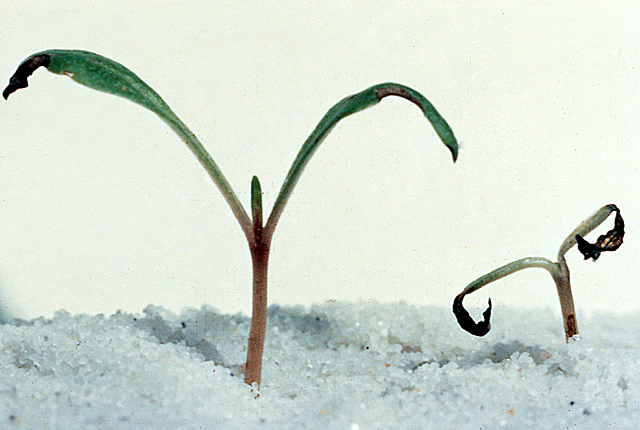
Bacterial leaf spot (Blight) | Beet
DISEASE: Bacterial leaf spot (Blight)
HOST: Beet (Beta vulgaris)
PATHOGEN: Pseudomonas syringae pv. aptata
PATHOGEN SYNONYM: Pseudomonas aptata
SOURCE: C. Schneider
DISEASE: Bacterial leaf spot (Blight)
HOST: Beet
Leaves with dark brown necrotic regions and streaks; two petioles also are infected.
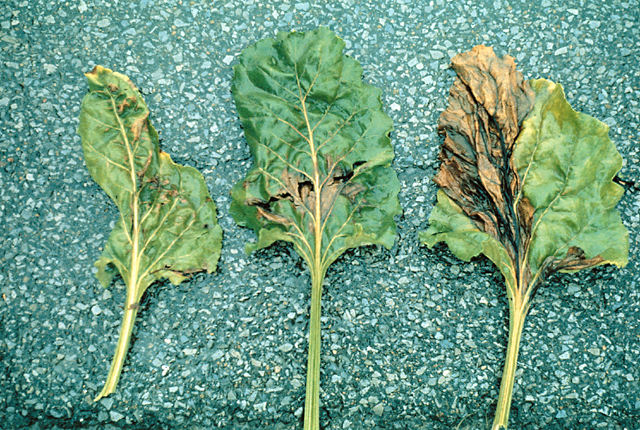
Bacterial leaf spot (Blight) | Beet
DISEASE: Bacterial leaf spot (Blight)
HOST: Beet (Beta vulgaris)
PATHOGEN: Pseudomonas syringae pv. syringae
SOURCE: C. Schneider
DISEASE: Bacterial leaf spot of beet
HOST: Beet
Beet leaves with spots and marginal necrosis.
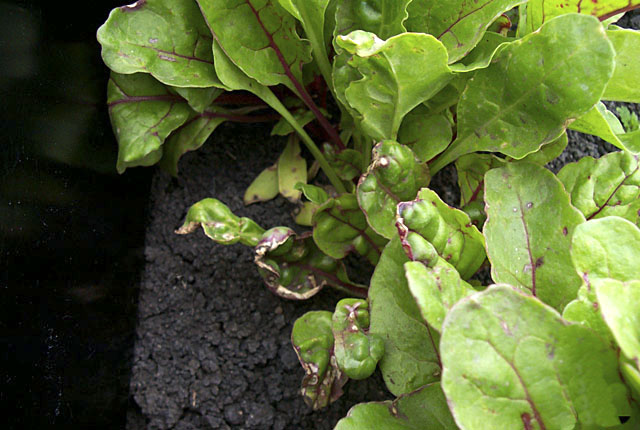
Bacterial leaf spot of beet | Beet
DISEASE: Bacterial leaf spot of beet
HOST: Beet (Beta vulgaris subsp. vulgaris)
PATHOGEN: Pseudomonas syringae pv. aptata
PATHOGEN SYNONYM: Pseudomonas aptata
SOURCE: P. Brown
DISEASE: Bacterial leaf spot
HOST: Sesame
Leaf with water-soaked lesions.
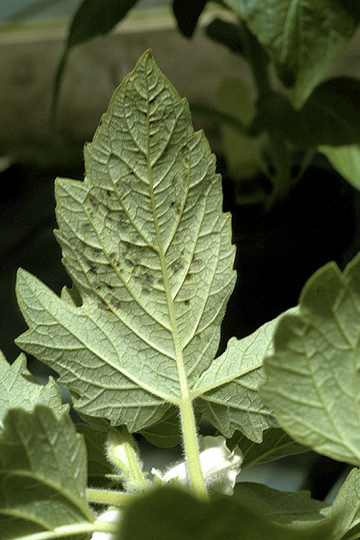
Bacterial leaf spot | Sesame
DISEASE: Bacterial leaf spot
HOST: Sesame (Sesamum orientale)
PATHOGEN: Pseudomonas syringae pv. sesami
SOURCE: M. Schroth
DISEASE: Bacterial leaf spot
HOST: Soybean
Early symptoms of bacterial blight.
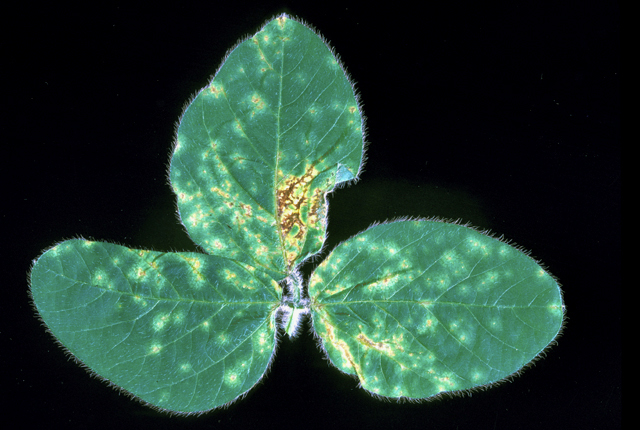
Bacterial leaf spot | Soybean
DISEASE: Bacterial leaf spot
HOST: Soybean (Glycine max)
PATHOGEN: Pseudomonas syringae pv. glycinea
SOURCE: D. Cupples
DISEASE: Bacterial leaf spot
HOST: Soybean
Leaf with large, light brown necrotic lesions.
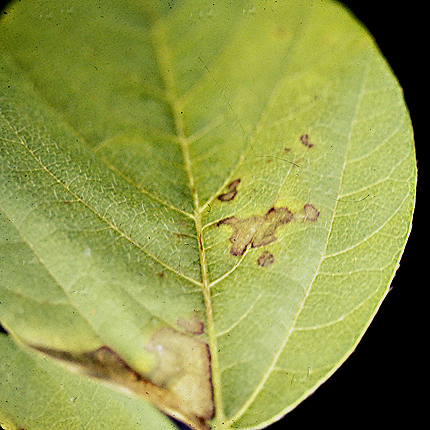
Bacterial leaf spot | Soybean
DISEASE: Bacterial leaf spot
HOST: Soybean (Glycine max)
PATHOGEN: Pseudomonas viridiflava
SOURCE: R. Gitaitis
DISEASE: Bacterial pocket
HOST: Beet
Sugar beets with many small tubercles at infection sites.

Bacterial pocket | Beet
DISEASE: Bacterial pocket
HOST: Beet (Beta vulgaris)
PATHOGEN: Xanthomonas axonopodis pv. betlicola
PATHOGEN SYNONYM: Xanthomonas campestris pv. betlicola
SOURCE: C. Schneider
DISEASE: Bacterial pustule
HOST: Soybean
Early symptoms are minute, pale green spots on young leaves. Later, small pustules form in the center of spots, best observed on underside of leaves. Spots vary in size and darken with age and lesions coalesce. Dead areas are torn away by wind.
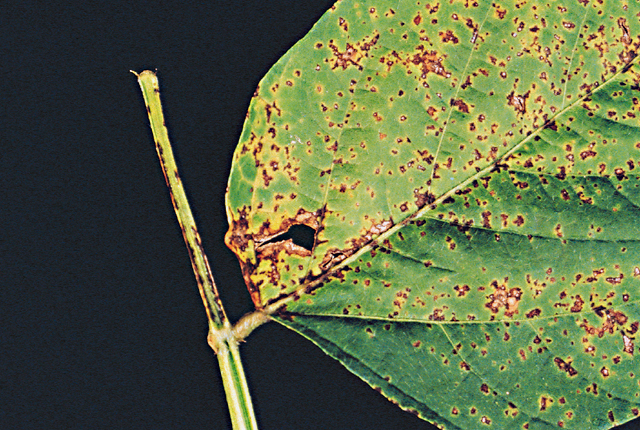
Bacterial pustule | Soybean
DISEASE: Bacterial pustule
HOST: Soybean (Glycine max)
PATHOGEN: Xanthomonas axonopodis pv. glycines
PATHOGEN SYNONYM: Xanthomonas campestris pv. glycines
SOURCE: APS





